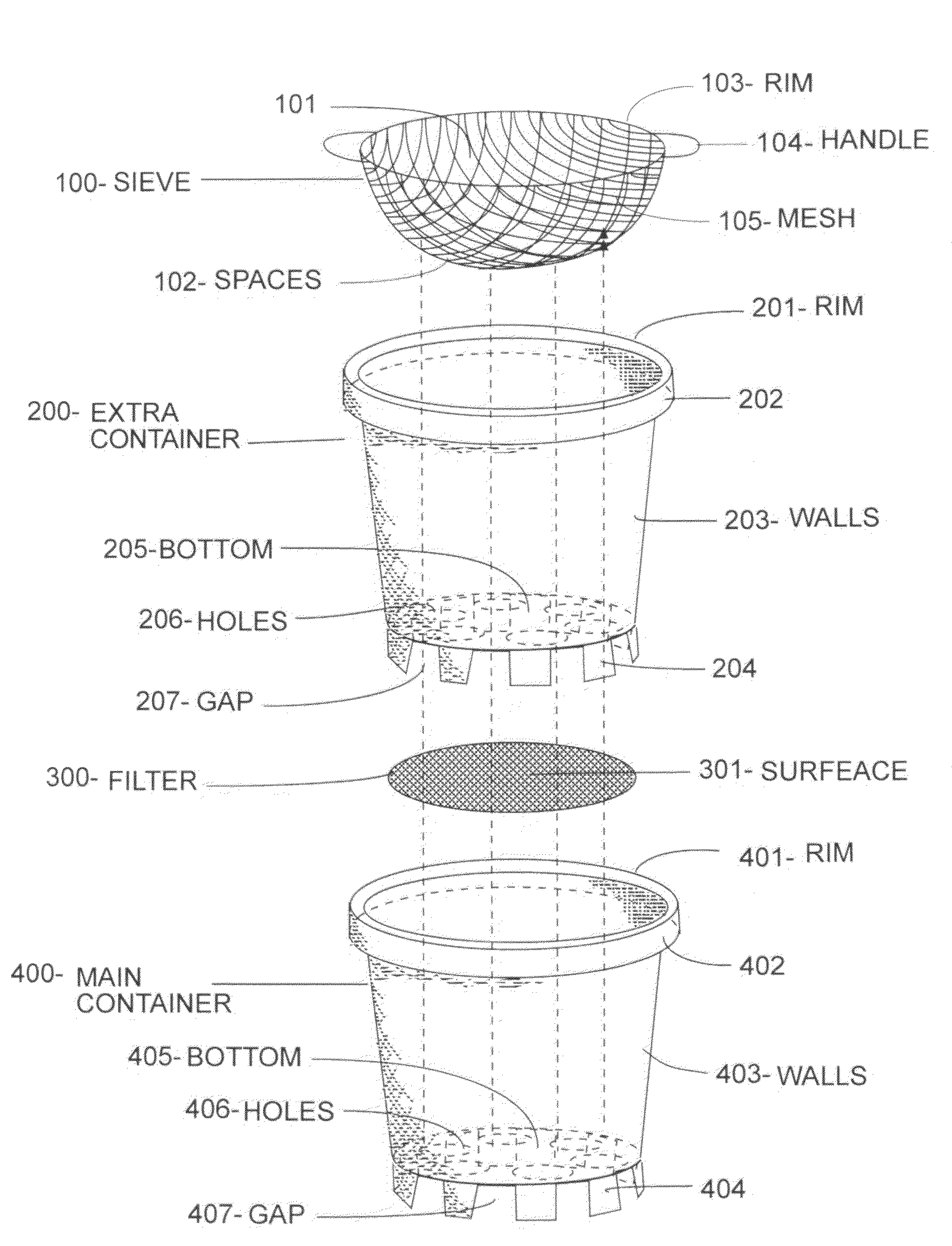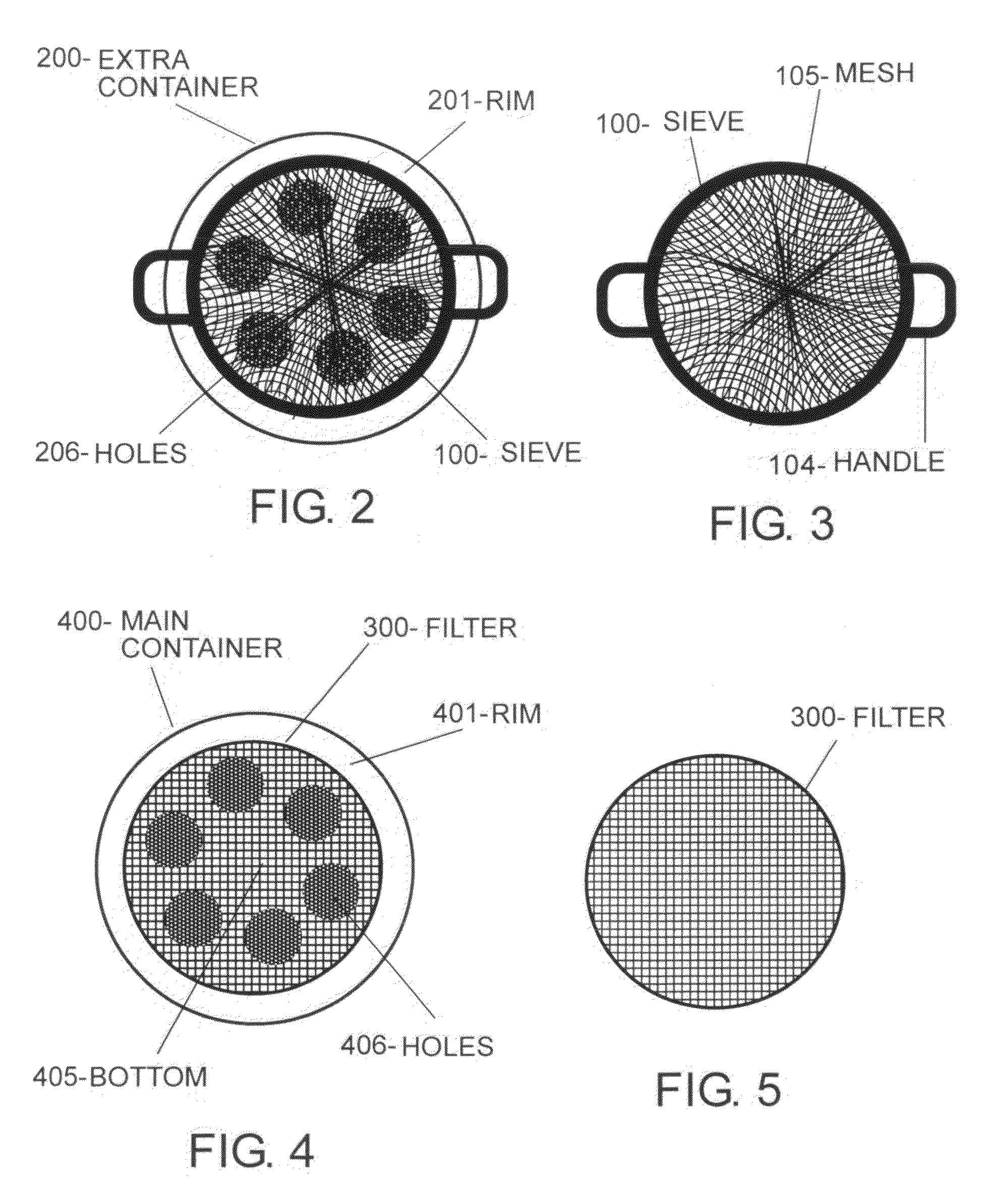Infestation tester for small insects
a technology for insect infestation and testing, applied in the field of insect infestation testing, can solve the problems of affecting the growth, appearance and marketability of crops, affecting the health of plants and human health, and causing big damage and costs to growers, food industries and consumers
- Summary
- Abstract
- Description
- Claims
- Application Information
AI Technical Summary
Benefits of technology
Problems solved by technology
Method used
Image
Examples
first embodiment
—FIGS. 1 to 8
[0025]FIG. 1 shows a view of all parts of my invention and their right order of stacking for assembly. The parts are a main container 400 a filter 300 an extra container 200 a sieve 100.
[0026]FIG. 1, 4 and 7 show the main container 400. The main container 400 is punctured with plurality of holes 406 at its bottom 405. The holes 406 are big enough to allow fast drainage. Under the container there are means to create gap 404 which may be a plurality of legs under main container 400 from the surface it is standing on. The means to create gap 404 which may be a plurality of legs, create a gap 407 under the main container 400. The first embodiment is shaped like a cylinder but it can have other shapes too. Diameter of bottom 405 is about 6″ but it can have a different size. Walls 403 are 10″-15″ high.
[0027]At the top of the walls 403 there is a bump 402. The bump 402 allows stacking and separating easily the main container 400 from the extra container 200. The first embodime...
PUM
 Login to View More
Login to View More Abstract
Description
Claims
Application Information
 Login to View More
Login to View More - R&D
- Intellectual Property
- Life Sciences
- Materials
- Tech Scout
- Unparalleled Data Quality
- Higher Quality Content
- 60% Fewer Hallucinations
Browse by: Latest US Patents, China's latest patents, Technical Efficacy Thesaurus, Application Domain, Technology Topic, Popular Technical Reports.
© 2025 PatSnap. All rights reserved.Legal|Privacy policy|Modern Slavery Act Transparency Statement|Sitemap|About US| Contact US: help@patsnap.com



